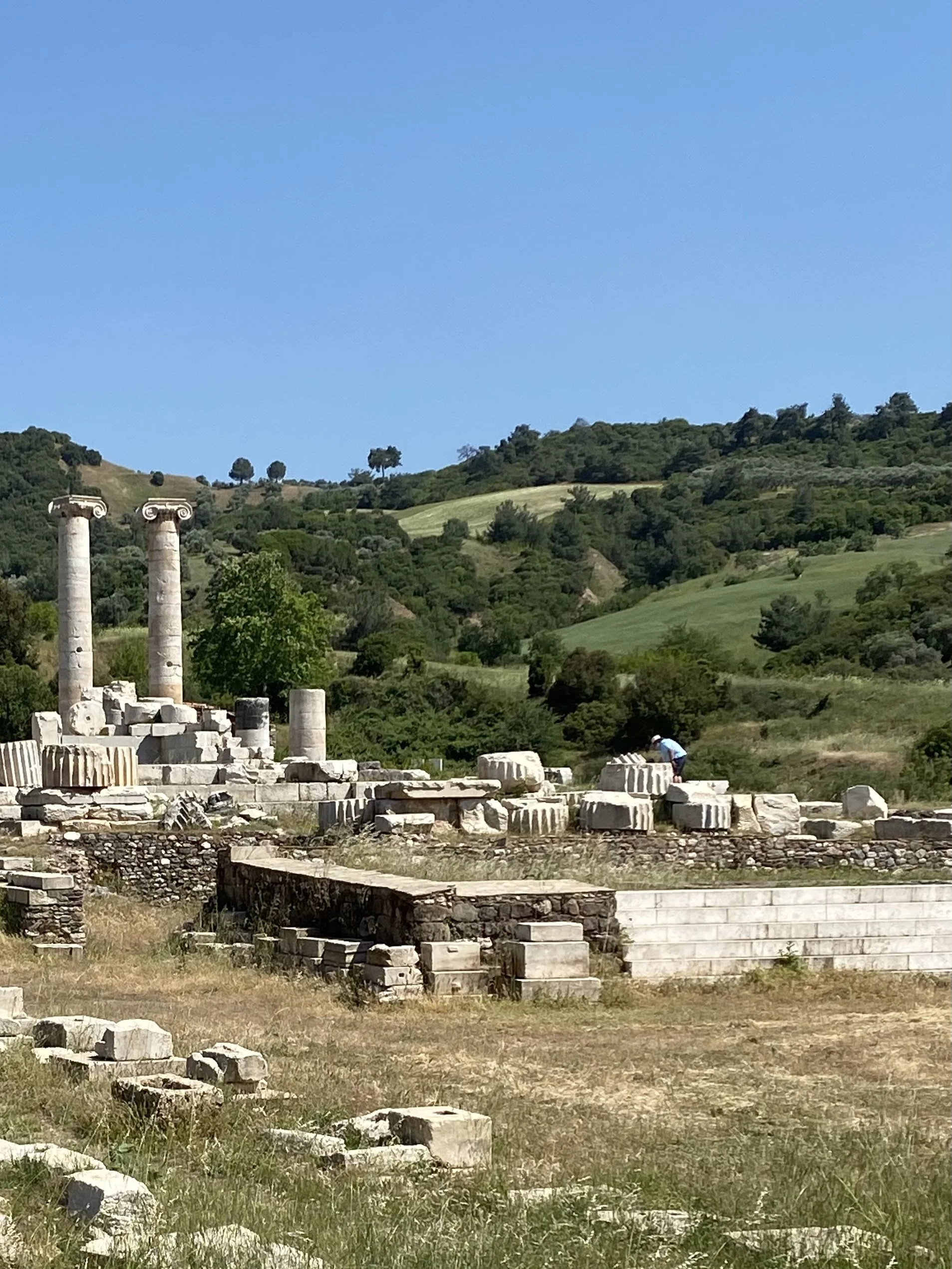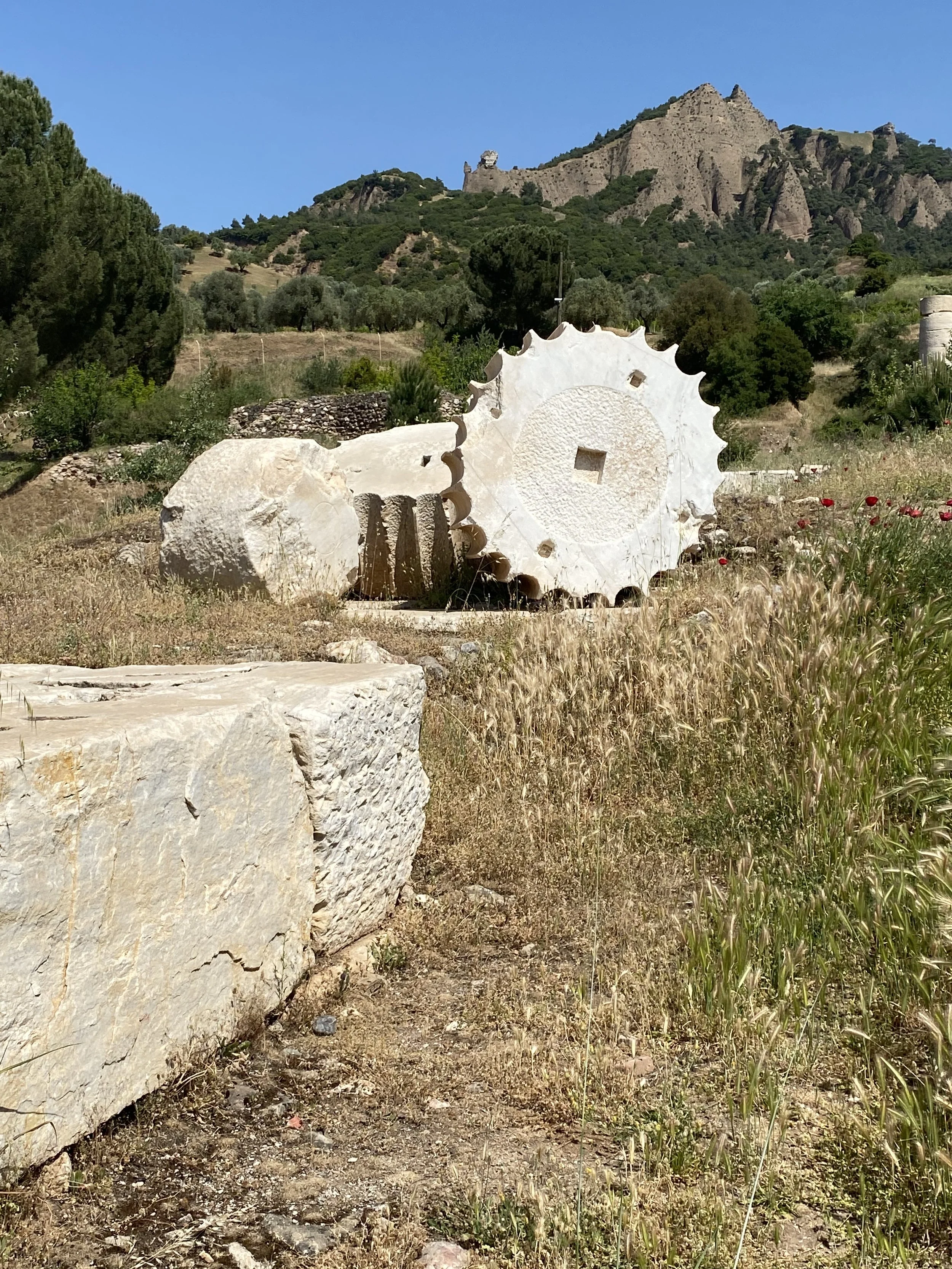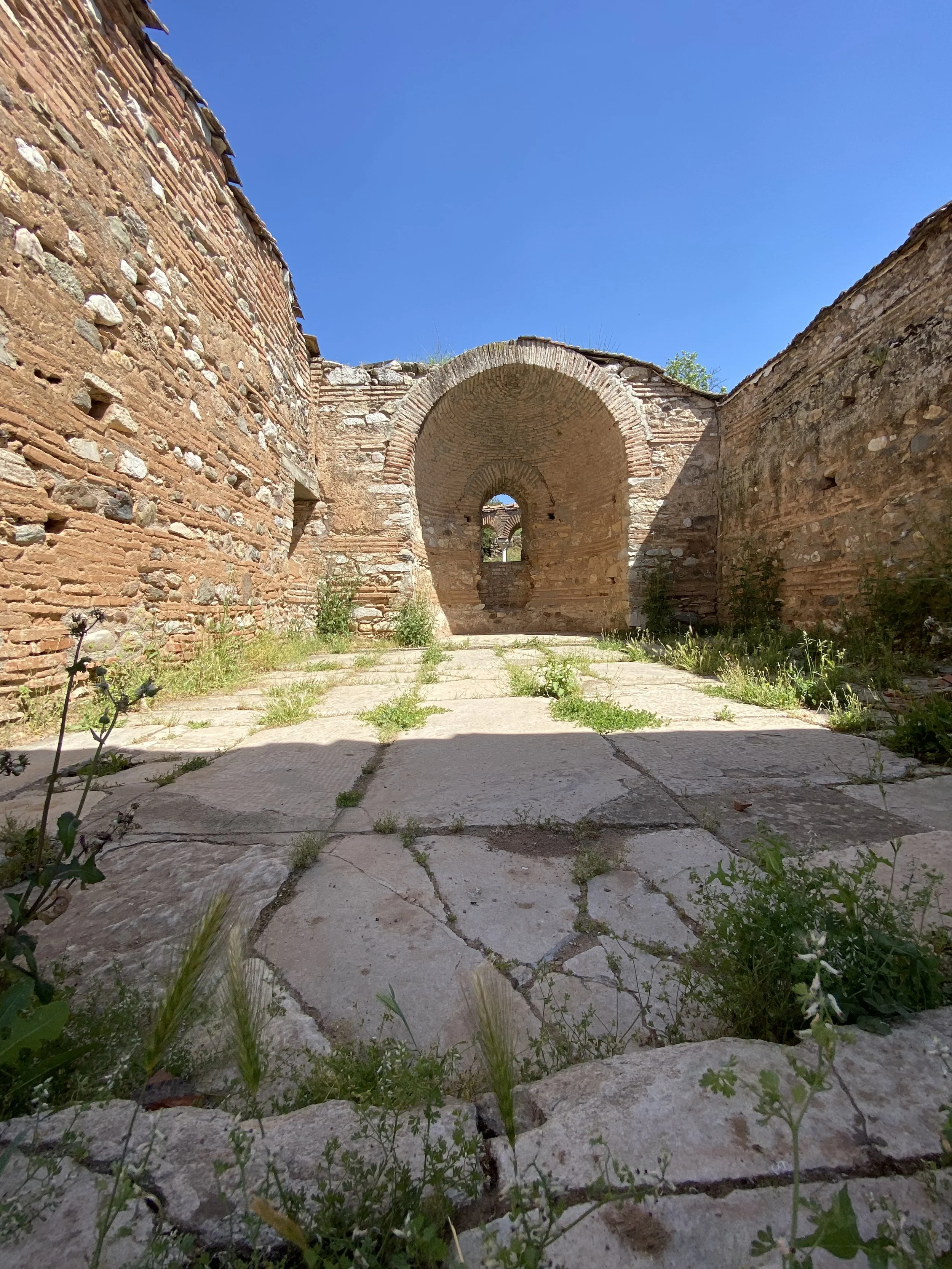Sardis, Artemision Temple area (Sart, Turkey)
“And to the angel of the church in Sardis write: ‘ …Remember, then, what you received and heard. Keep it, and repent. If you will not wake up, I will come like a thief, and you will not know at what hour I will come against you.” Revelation 3:1,3
The history of Sardis includes conquest by the Persians in the 6th century BC. King Croesus (of legendary wealth d/t gold of Mt Tmolus and the nearby Pactolus river), who felt himself safe in the highly elevated and fortified acropolis of Sardis was surprised by an attach of Cyrus and the Persian forces. The army discovered an entrance point by observing one of Croesus’s soldiers. The attack was a complete surprise - a thief in the night. 200 years later the city was captured by a surprise siege again, by Antiochus III bringing Sardis into the Attalid kingdom and the control of Pergamon. Perhaps the early christian church knew this history and understood the reference in John’s Revelation.
The area of the temple of Artemis is at the western base of Mt Tmolus. Looking up to the acropolis itself, some byzantine era walls are visible, but the acropolis is less than 1/3 of its original size d/t earthquakes and erosion over the centuries. This is the only reason we didn’t make the hike (well maybe also a little laziness). The temple is the 4th largest Ionic temple in then ancient world. It is one of 3 major Artemision complexes in Turkey / Asia Minor (Ephesus and Magnesia are the other two). An ancient limestone altar is the oldest part of the complex and dates to the 6th century BC. The rest of the complex was built in stages and includes hellenistic construction and Roman from 4th century BC to 2nd century AD. Two of the ionic columns stand in their entirety, with many partially standing, and many abandoned while in stages of construction. If ancient architectural styles and building techniques interest you - there is a lot written about the details of this temple and effect of construction during various eras. There is christian graffiti on many of the pillars from the 3rd and 4th century AD as the Christian era began.
Most interesting is a small byzantine era church at the SE edge of the temple. The original church was constructed in the 4th century AD, and then enlarged in the 6th century AD. This makes it one of the earliest Christian churches still standing. Behind the church is the path up to the acropolis.
Sardis, Temple of Artemis


























